The master of the high seas: Turner's genius for painting marine landscapes
The National Maritime Museum’s new Turner exhibition is an astounding testament to his enduring talent, says Adrian Hamilton

Your support helps us to tell the story
From reproductive rights to climate change to Big Tech, The Independent is on the ground when the story is developing. Whether it's investigating the financials of Elon Musk's pro-Trump PAC or producing our latest documentary, 'The A Word', which shines a light on the American women fighting for reproductive rights, we know how important it is to parse out the facts from the messaging.
At such a critical moment in US history, we need reporters on the ground. Your donation allows us to keep sending journalists to speak to both sides of the story.
The Independent is trusted by Americans across the entire political spectrum. And unlike many other quality news outlets, we choose not to lock Americans out of our reporting and analysis with paywalls. We believe quality journalism should be available to everyone, paid for by those who can afford it.
Your support makes all the difference.Of making Turner exhibitions there is no end. Nor should there be. He was such an extraordinary painter and left the nation such a monumental archive of sketchbooks, watercolours and oils that it is doubtful galleries could ever find the definitive statement on Britain’s greatest and most influential artist.
The surprising thing about the National Maritime Museum’s latest show on Turner and the Sea is that it has never been done before. As much as half to two-thirds of Turner’s total output is devoted to the subject.
Born and bred in London, his home town for all his life, he nonetheless visited nearly all of England’s ports and coastlines and stayed regularly in Margate at the boarding house of his mistress, Sophia Caroline Booth. In his later years, he sought to protect his privacy by adopting the pseudonym of a retired naval officer, “Admiral Booth”, an indication both of his unorthodox personal arrangements and his self-esteem.
Nobody could ever doubt the ambition of this barber and wig-maker’s son. From the first, he saw in marine as landscape painting a market for his works and an avenue to fame. The exhibition starts with three monumental paintings he did of storm scenes painted between his late twenties and early thirties (1803-1810). Seen together for the first time, Calais Pier, The Shipwreck and The Wreck of a Transport Ship show a young man setting out his stall with total confidence and maximum effect.
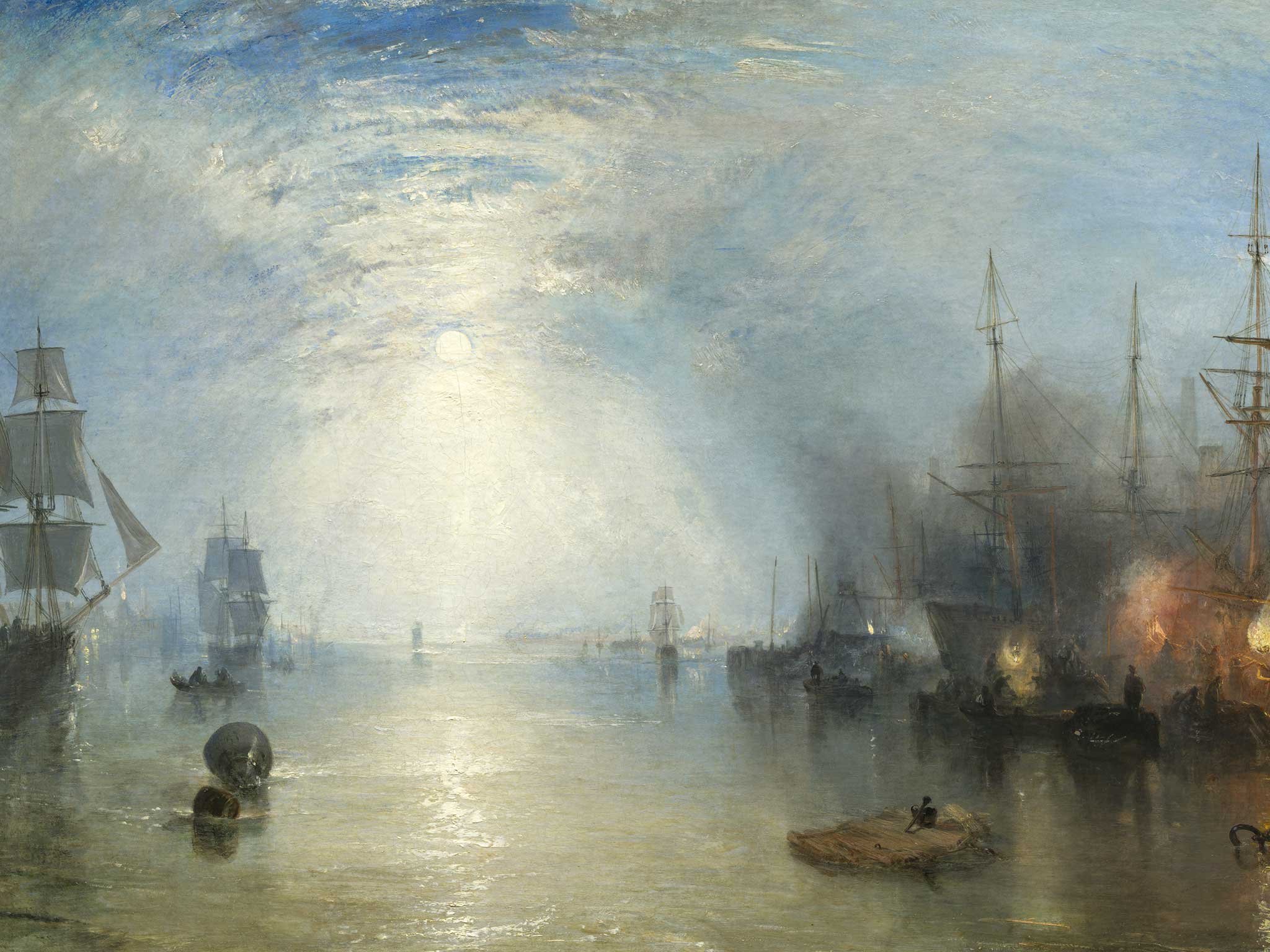
The models may be apparent in the pictures of Willem van de Velde the Younger, Jacob van Ruisdael and Claude-Joseph Vernet, shown nearby, but the style is all Turner’s own as the waves swirl in great arcs, the white foam is painted in thick, short brush strokes and the boats and their occupants are swept up in the elemental power of the storm. His more conventional watercolours and prints of coastal towns and fishermen of the period stressed the picturesque, but in these works Turner embraced ideas of the sublime that were the touchstone of romantic poets and novelists, as well as artists.
It was what made Turner so much an artist of his time but also one quite out of it. As he grew older so he grew ever more experimental and daring in his attempt to express the feeling of the scenes he was painting. When his Snow Storm – Steam-Boat off a Harbour’s Mouth, a work of breathtaking energy and near abstraction of shape, was shown at the Royal Academy in 1842, it was met with disbelief. Turner’s response was to say that he didn’t paint it to be understood but simply “to show what such a scene was like”.
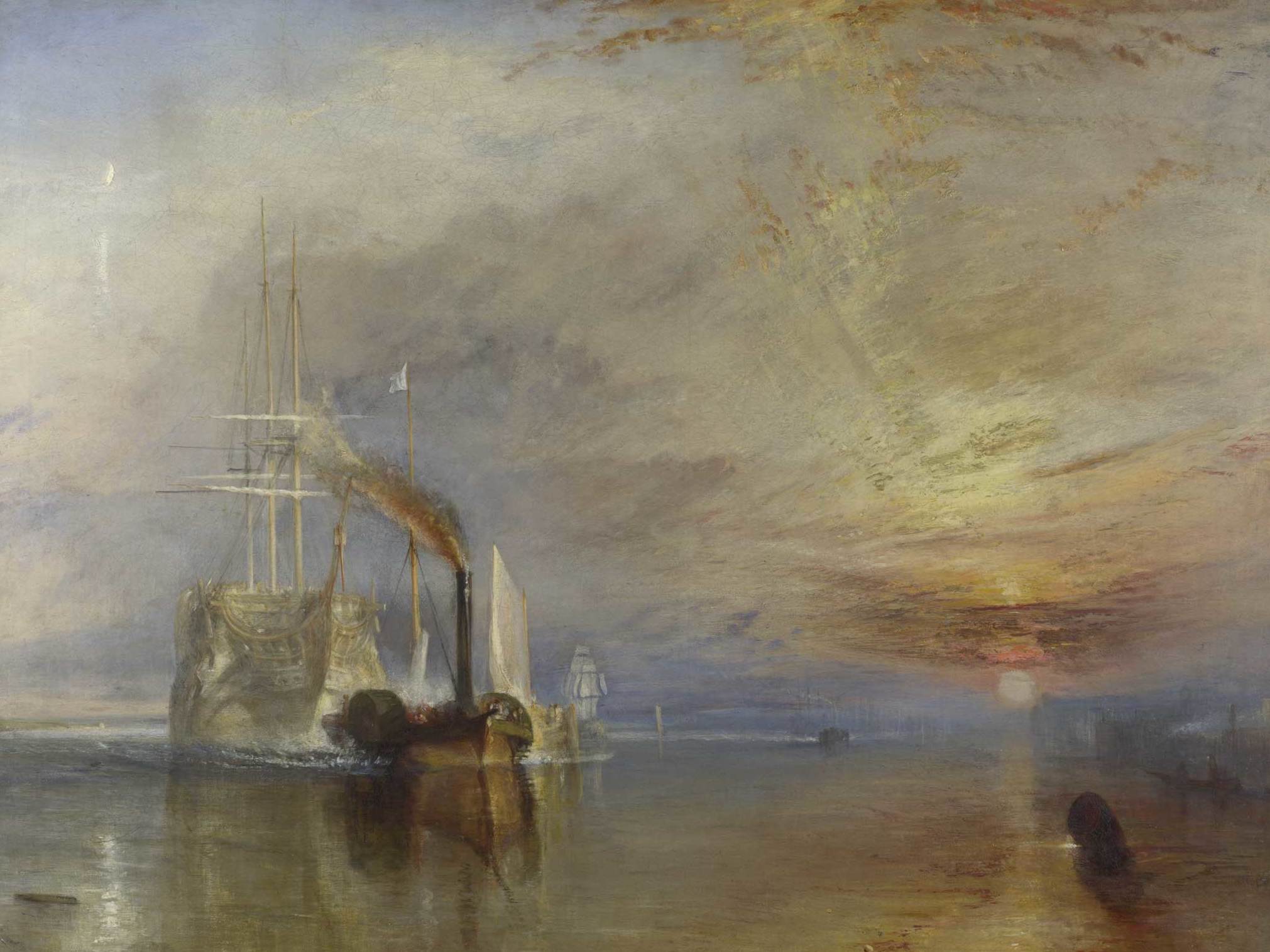
That reach for the expression of pure sensation is what set Turner apart from his contemporaries. His supposed last words, “The sun is God”, are probably apocryphal. But they express a truth about Turner. He was no proto-Impressionist seeking to portray the effect of light on place. What attracted him to the sea was not just its presence and rhythms, but the force within. His efforts might at times have been rough to the point of obscurity and his grander salon paintings are embarrassing in their attempt to emulate his idol Claude Lorrain, but they were always striving to portray in paint the emotions he felt in gazing at a storm-swept sea or a tumbling mountain waterfall or a Venetian lagoon at twilight.
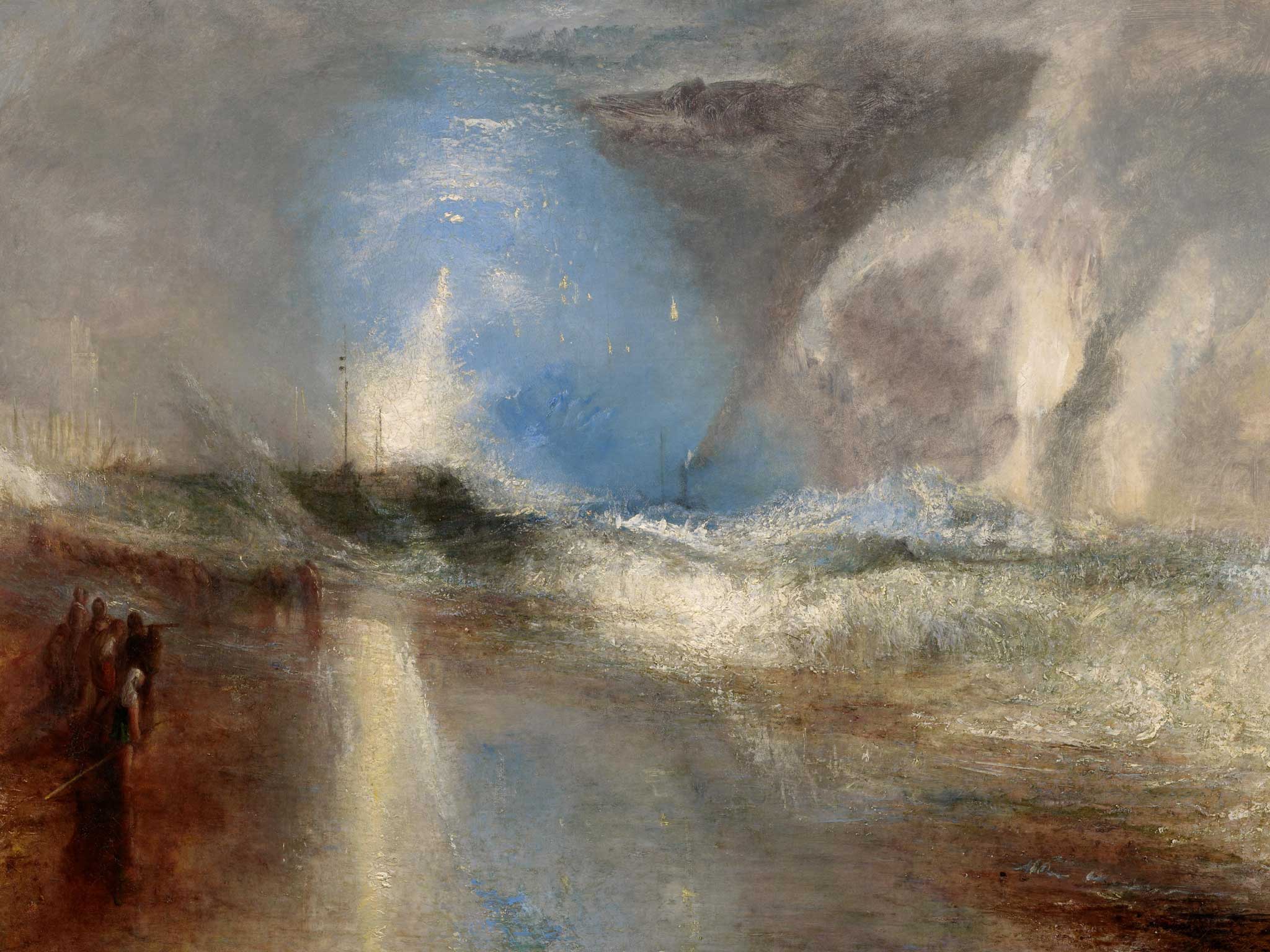
I’m not sure the Maritime Museum fully brings this alive. Although it displays a wide range of his art, it doesn’t put sketchbooks and watercolours together with the final paintings in a way that helps us work out how Turner’s mind worked. Instead it sets out, a little pedantically, to demonstrate what being a marine painter meant to Turner as an artist of his time, how he started out to copy and surpass his Dutch and French masters, and then reacted to the younger artists who, taking a lead from his example, became looser and more dramatic in their work.
Turner certainly painted, as most artists do, with half an eye over his shoulder – watching his rivals showing at the annual Royal Academy exhibitions was for him a competitive art. The works he entered before the public opening were there to make a statement of prowess. Early on, he set up his own gallery in Baker Street in London to show his own works to the clientele he favoured. At the end of his life he was busily buying back his works to fill out a corpus of his career to preserve for posterity.
The museum, with its rich collections of Nelsonia, devotes a special place to his monumental painting of the Battle of Trafalgar, his only royal commission, painted in 1824 nearly 20 years after the event, with great attention to historical detail and not a little bombast. It gives pride of place, too, to the famous The Fighting Temeraire Tugged to Her Last Berth to Be Broken Up.
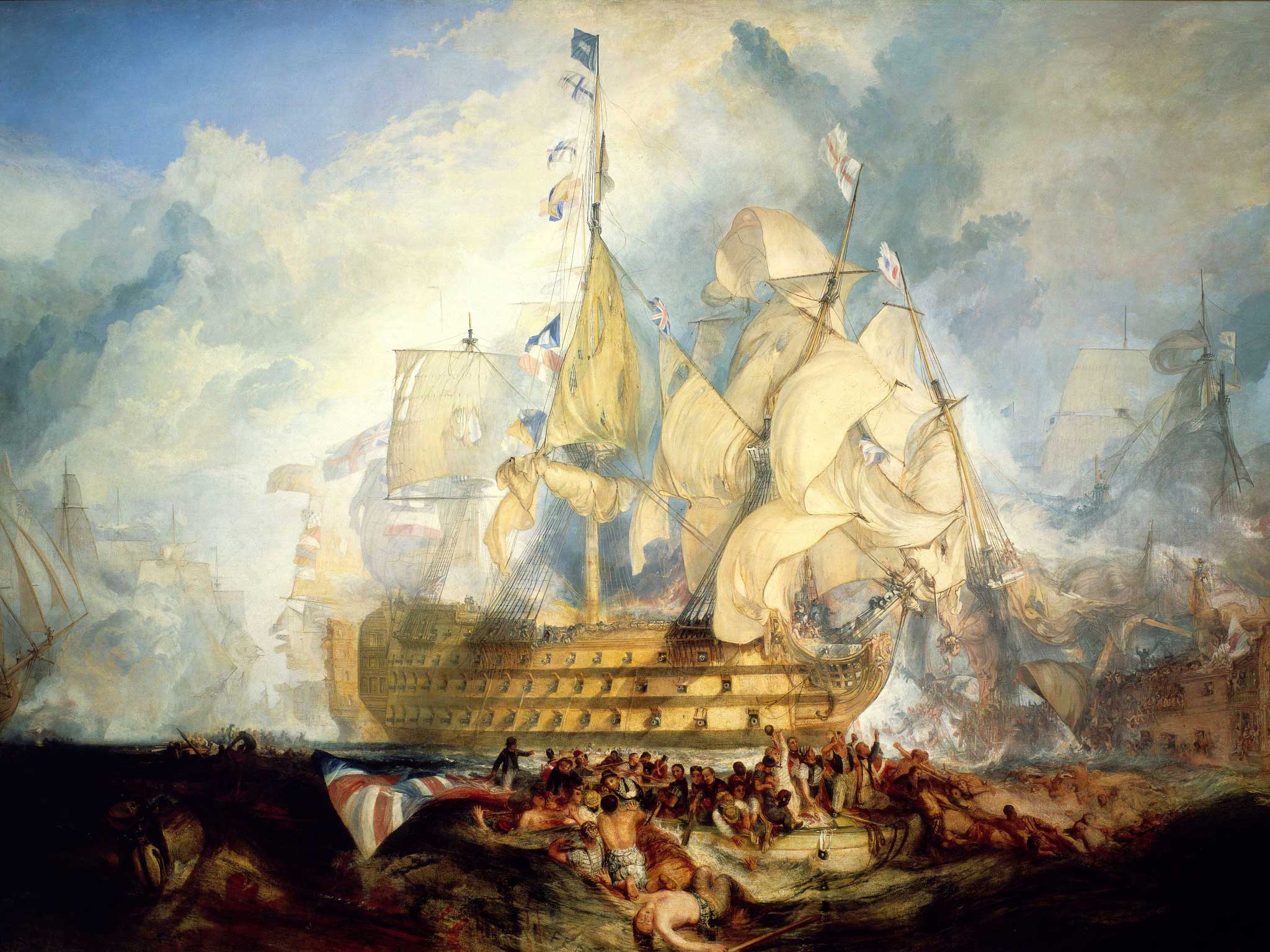
The painting was a huge success at the time and still is. You can see why in its melancholic vision of the ghostly battleship being pulled by a tug to the knackers yard. But look more closely and you see that Turner pays as much attention to the setting sun on the right of the picture as to the Temeraire kept on the left. For all the temptation to interpret this as Turner’s elegy to a dying world of the sail-ship, it’s hard not to see it also as a study of light and reflection.
The Temeraire was painted in 1838 at a time when the artist painted a number of oils on themes of imperial decline and fall. By the 1840s he seemed, to the horror of the critics, hardly interested in the subjects at all, using them merely as the occasions for expressions of feeling. If the first room of the exhibition is a display of bravura technique, the last rooms are an even more astounding show of pure sensation. The watercolours and the oil sketches, even the earlier ones on display from the 1820s, are experimental enough as you witness Turner using rapid strokes of colour to catch the thrashing of water and the looming of cloud over the horizon. No artist has ever been able to use red the way he does to give urgency to the scene and mood to the weather.
But what leaves you gasping is that he does exactly the same with his late oils on canvas as he did with the watercolours. Whether he intended these oils, stacked away in his studio, as finished works or rough drafts we don’t know. But presented along the walls of the final room they are art of a different dimension. Even in the wonderful Whalers (The Whale Ship) of 1845, the ship is surrounded by a seething mass of whale, wave and weather that defy all rules of realism. In the three paintings that are considered final works but have no date – Waves Breaking Against the Wind, Seascape with Storming Coming On and Seascape with Distant Coast – there is no point in saying what they are about. They just are – without rules, without objects, without composition – pure paint and pure sensation.
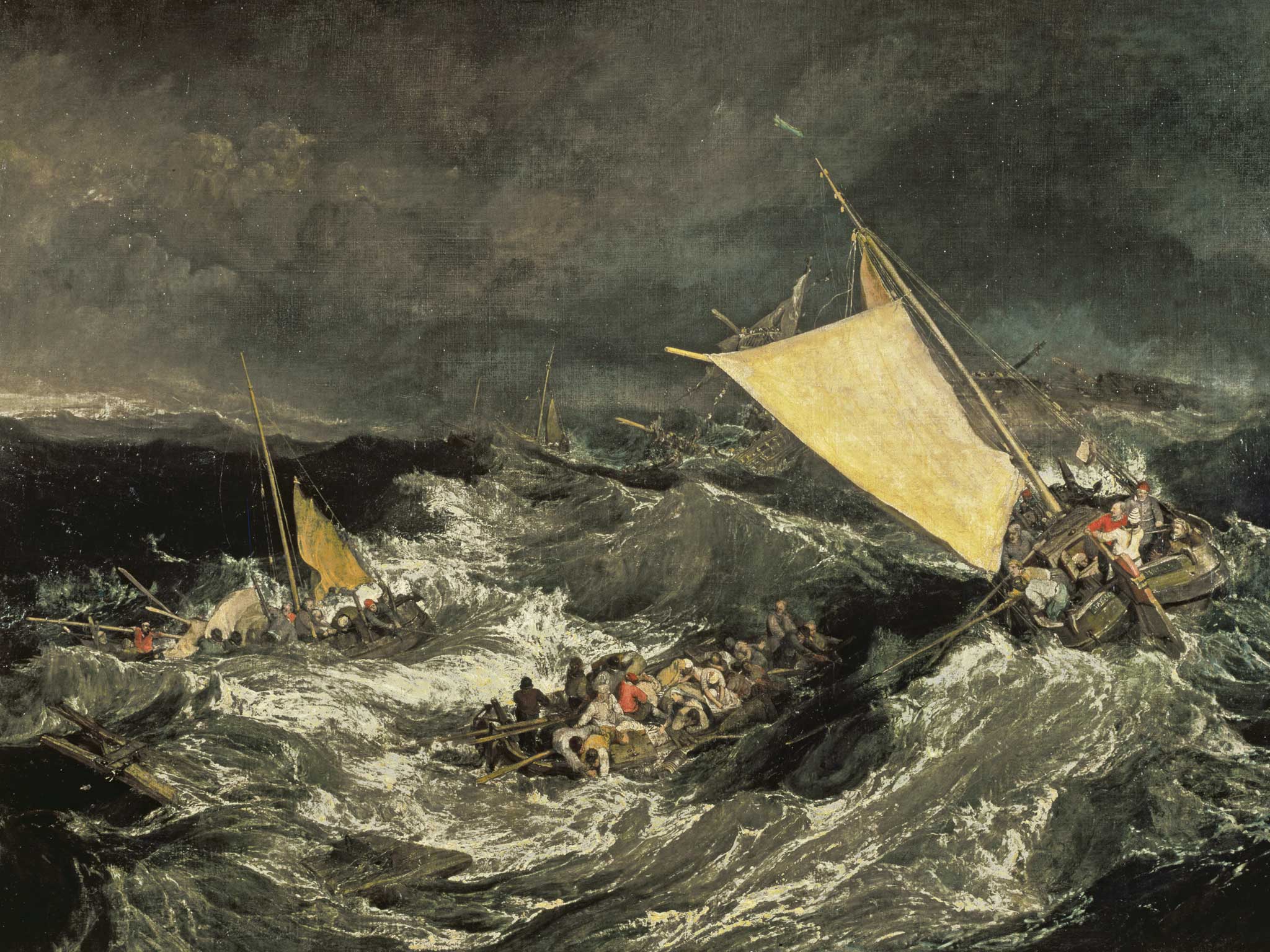
The Maritime Museum, with an ambition that Turner would have readily appreciated, set out to create “a world-class exhibition”. It has succeeded. It would be criminal to miss it.
Turner & the Sea, National Maritime Museum, London SE10 (rmg.co.uk) to 21 April
Watch a video preview:
Join our commenting forum
Join thought-provoking conversations, follow other Independent readers and see their replies
Comments